Dan Fumano: The project, including reallocating two car lanes on the Granville Bridge for biking, walking and a rolling pathway, is expected to be completed by the end of 2024.
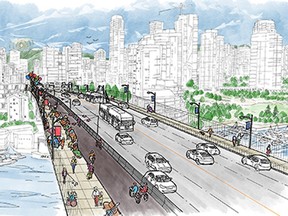
A $50 million project to transform the Granville Bridge and pave the way for a new downtown neighbourhood will have a big impact on long-term city-building, without, city hall hopes, a significant negative impact on traffic.
The city calls it the “Granville connector” project: a vision, approved by city council, to convert the two westernmost of the bridge’s eight car lanes to separated walking, rolling and cycling routes, similar to the protected lanes on the Burrard Bridge. The city is also removing the loops on the Granville Bridge’s north end, with a plan to replace them with a new street network that will eventually be home to housing and services on the city-owned land.
Start your day with a roundup of B.C.-focused news and opinion delivered straight to your inbox at 7 a.m., Monday to Friday.
Thanks for signing up!
A welcome email is on its way. If you don't see it, please check your junk folder.
The next issue of Sunrise presented by Vancouver Sun will soon be in your inbox.
“This is definitely going to be one of the projects that really has a big city-shaping effect,” said Paul Storer, Vancouver’s director of transportation. “When you think about the ability to create better public space on and around the bridge, and removal of the loops and replacement with an at-grade road network to reconnect the urban grid and really carry the momentum from downtown Granville down to the waterfront, this is a huge project.”
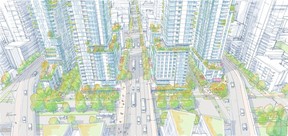
The permanent, separated bike lane on the Burrard Bridge, which opened in 2009 early in Vision Vancouver’s 10-year reign at city hall, created significant traffic delays during the construction phase. But the long-term gridlock that many bike lane critics predicted never materialized, and some early naysayers changed their tune after the lane was completed and proved popular.
Charles Gauthier, former head of the Downtown Vancouver Business Improvement Association, was an early critic of the city’s plans for the Burrard bike lane, but told CBC News in 2019 he had changed his views.
“None of us had a crystal ball back then,” Gauthier told the CBC in 2019. “We couldn’t have predicted how popular cycling would become if you made it safer for people.”
City hall hopes the Granville connector project will further boost cycling and walking trips in and out of downtown.
But the city anticipates that while the Granville connector project will slow down bridge traffic somewhat, it will not create delays as significant as the Burrard bike lane construction, Storer said. For one thing, he said, Granville will be going from four car lanes in each direction now, to at least two lanes in each direction during construction, whereas Burrard — which previously had six lanes of car traffic — was down to a single lane of car traffic in each direction during certain phases of construction.
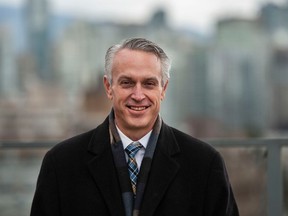
City staff had initially presented a vision that put an elevated walking and biking path through the Granville Bridge’s middle two lanes. But, after a public consultation process in 2019, respondents heavily preferred the option of a pathway on the bridge’s west side instead, and staff announced in early 2020 the city would pursue the option the public preferred.
Bike lanes were once a highly contentious political debate in Vancouver. Certainly, some still believe the city shouldn’t spend millions on additional cycling infrastructure. But they’re a minority. The city’s 2019 consultation found only about 10 per cent of respondents expressed the opinion that the city should do nothing and not change the Granville Bridge.
Some Vancouverites might view bike lane investments as a pet project of Vision Vancouver. Those who dislike these projects might hope city hall will change course now that Vision is no longer in power, and ABC Vancouver, seen as the centre-right successor to the Non-Partisan Association party that once opposed bike lanes, has swept to a strong majority on council. ABC’s park board majority is pursuing changes to the Stanley Park bike lane plans, which will continue to be a contentious debate. But anyone expecting a dramatic change now on Granville from ABC Mayor Ken Sim and his council will be disappointed.
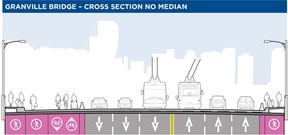
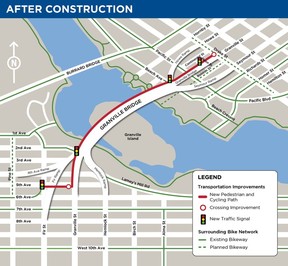
In a news release Wednesday, Sim called the Granville upgrades “much-needed” and said they will “will mean the bridge can truly serve as a vital connection for all modes of travel between the growing commercial and job centres of the Broadway corridor and the downtown core.”
The project, including the removal of the loops, is expected to be completed by the end of 2024.
dfumano@postmedia.com
twitter.com/fumano
Support our journalism: Our in-depth journalism is possible thanks to the support of our subscribers. For just $3.50 per week, you can get unlimited, ad-lite access to The Vancouver Sun, The Province, National Post and 13 other Canadian news sites. Support us by subscribing today: The Vancouver Sun | The Province.
-

Dan Fumano: Vancouver prepares for kickoff of 2026 FIFA World Cup
-

Dan Fumano: ABC heavily outspent rivals in big Vancouver election win
-

Dan Fumano: Vancouver city council pushes to 'dial-up' Granville revitalization


